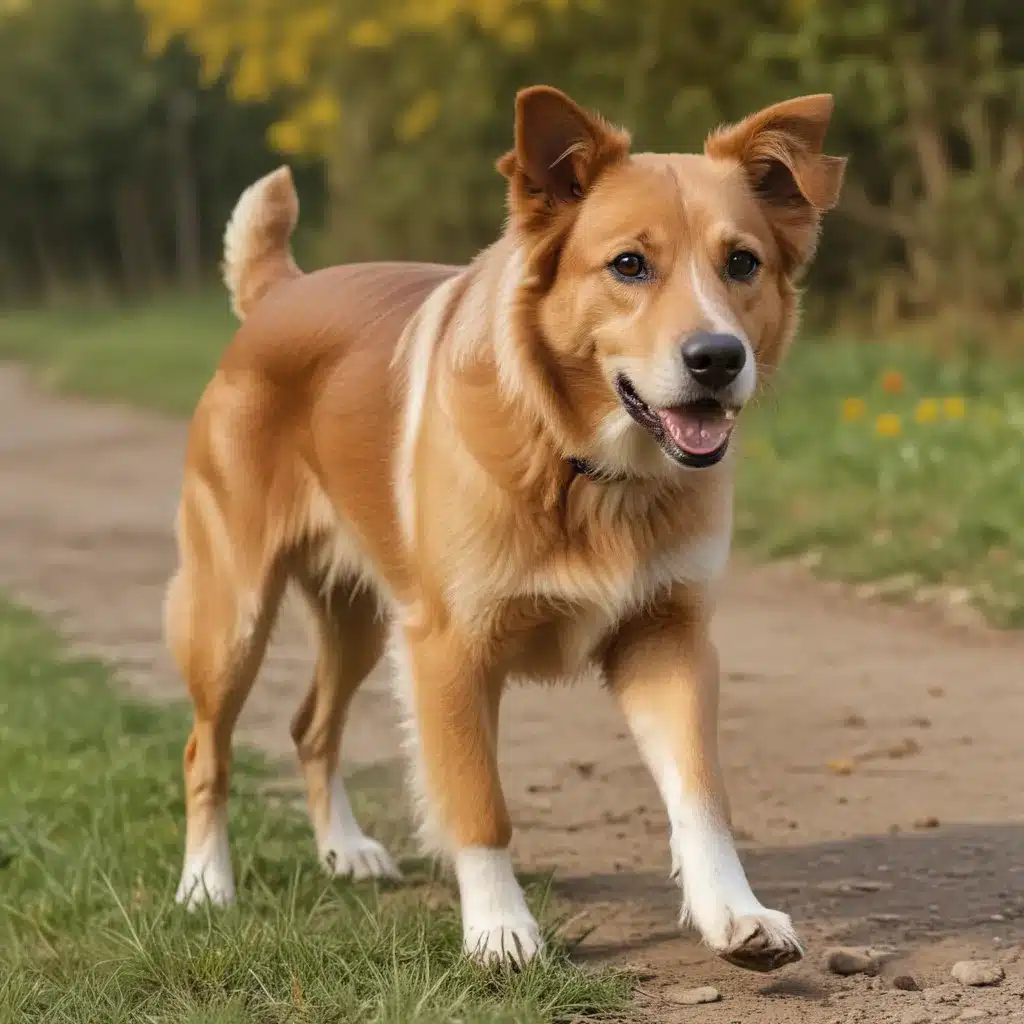
Paw-sitively Painful: Navigating the Tricky Terrain of Arthritis in High-Energy Hounds
As a proud dog parent, I know all too well the boundless energy and enthusiasm our four-legged friends can possess. Whether it’s chasing after tennis balls, leaping over obstacles, or embarking on adventurous hikes, our canine companions can often put even the most active humans to shame. But what happens when that boundless energy and joie de vivre starts to wane? When our furry friends begin to slow down and seem to struggle with everyday activities? That, my friends, could be a sign of a troubling condition known as arthritis.
Decoding the Early Symptoms of Arthritis in Active Dogs
Arthritis is a sneaky beast, often creeping up on our pups without us even realizing it. One day, your high-octane hound may be bounding up the stairs with ease, and the next, they’re hesitating at the bottom, almost as if the steps have suddenly become an insurmountable obstacle. VCA Hospitals explains that the early signs of arthritis in dogs can be easy to miss, as they often develop gradually over time. Some of the subtle red flags to watch out for include:
- Reluctance to play or engage in their favorite activities
- Slowing down on walks or refusing to go as far as they once did
- Difficulty getting up from a lying or sitting position
- Hesitation when climbing stairs or jumping onto furniture
It’s important to remember that these changes can be easy to overlook, especially if they occur gradually. That’s why it’s crucial to pay close attention to your pup’s daily habits and routines, and be quick to consult your veterinarian if you notice any concerning changes.
Uncovering the Underlying Causes of Canine Arthritis
But what exactly is causing this painful condition in our furry friends? According to the American Kennel Club, there are a number of factors that can contribute to the development of arthritis in dogs, including:
- Age: As our pups grow older, the natural wear and tear on their joints can lead to the breakdown of cartilage and the onset of osteoarthritis.
- Injury or Trauma: A previous joint injury, such as a torn ligament or a fracture, can increase the risk of developing arthritis in that joint later in life.
- Congenital Conditions: Certain inherited conditions, like hip or elbow dysplasia, can predispose some breeds to a higher risk of developing arthritis.
- Excess Weight: Carrying extra pounds can put additional strain on a dog’s joints, accelerating the deterioration of the cartilage.
Interestingly, the AKC Canine Health Foundation notes that “just ‘getting old’ is NOT a cause of OA.” This is an important distinction, as it means that even our most active and youthful pups can be susceptible to the ravages of this debilitating condition.
Navigating the Challenges of Arthritis in High-Energy Hounds
As the caretakers of these energetic, adventure-loving canines, it can be heartbreaking to witness the toll that arthritis takes on their beloved companions. Imagine your once-boundless border collie hesitating at the bottom of the stairs, or your typically exuberant labrador retriever refusing to join you on your morning jog. The Blue Cross explains that this progressive disease can make even the simplest of tasks, like getting in and out of the car or going for a leisurely stroll, a painful and daunting ordeal.
But fear not, my fellow dog lovers! While there may be no cure for this debilitating condition, there are a number of ways we can work to manage our pups’ arthritis and help them maintain their quality of life. From adjusting their exercise routines to incorporating supplemental therapies, the key is to work closely with our veterinarians to create a comprehensive care plan that caters to our individual furry friends.
Developing a Holistic Approach to Canine Arthritis Management
When it comes to managing arthritis in our active dogs, a one-size-fits-all approach simply won’t cut it. Each pup is unique, with their own set of needs and preferences, and the treatment plan that works wonders for one may fall flat for another. That’s why the Mayo Clinic emphasizes the importance of a multimodal approach, which can include a combination of the following:
- Nutritional Supplements: Glucosamine, chondroitin, and omega-3 fatty acids can help reduce inflammation and support joint health.
- Pain Medications: Non-steroidal anti-inflammatory drugs (NSAIDs) can provide relief, but must be carefully monitored by your vet.
- Physical Therapy: Modalities like acupuncture, massage, and hydrotherapy can help improve mobility and manage pain.
- Dietary Changes: Maintaining a healthy weight through a specialized diet can take the pressure off aching joints.
- Surgical Interventions: In some cases, procedures like joint replacements or fusions may be recommended to alleviate pain.
By working closely with your veterinarian to develop a tailored approach, you can help your high-energy hound navigate the challenges of arthritis and continue to enjoy an active, fulfilling life.
Embracing the Power of Prevention: Keeping Canine Joints Healthy
Of course, the best way to deal with arthritis is to try to prevent it in the first place. The I Have Dogs team emphasizes the importance of maintaining a healthy weight, providing regular exercise, and being mindful of potential joint-related injuries from a young age. By taking proactive steps to protect our pups’ joints, we can help delay the onset of this debilitating condition and keep our four-legged friends feeling their best for years to come.
As we continue to navigate the ups and downs of life with our canine companions, it’s crucial to remain vigilant for the early warning signs of arthritis. By staying informed, working closely with our veterinarians, and embracing a holistic approach to management, we can help our high-energy hounds overcome the challenges of this painful condition and continue to live their best lives. So, let’s keep our pups moving, their tails wagging, and their spirits high – one step at a time.

